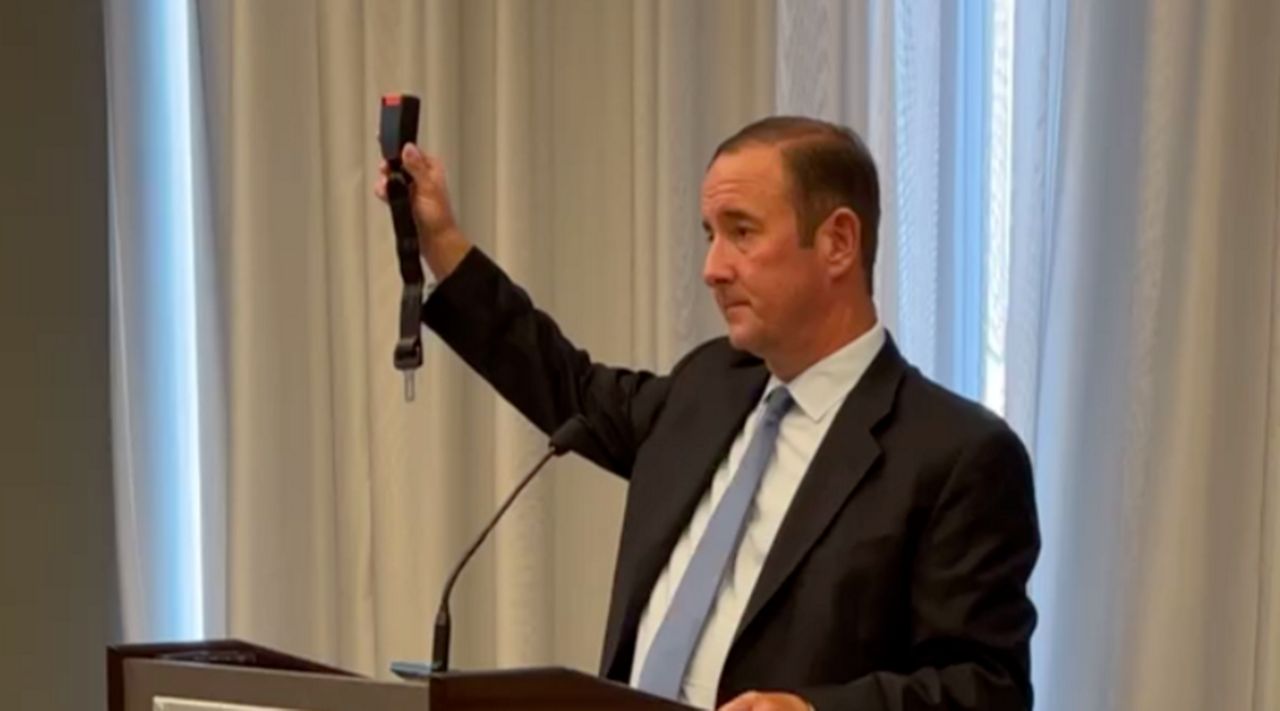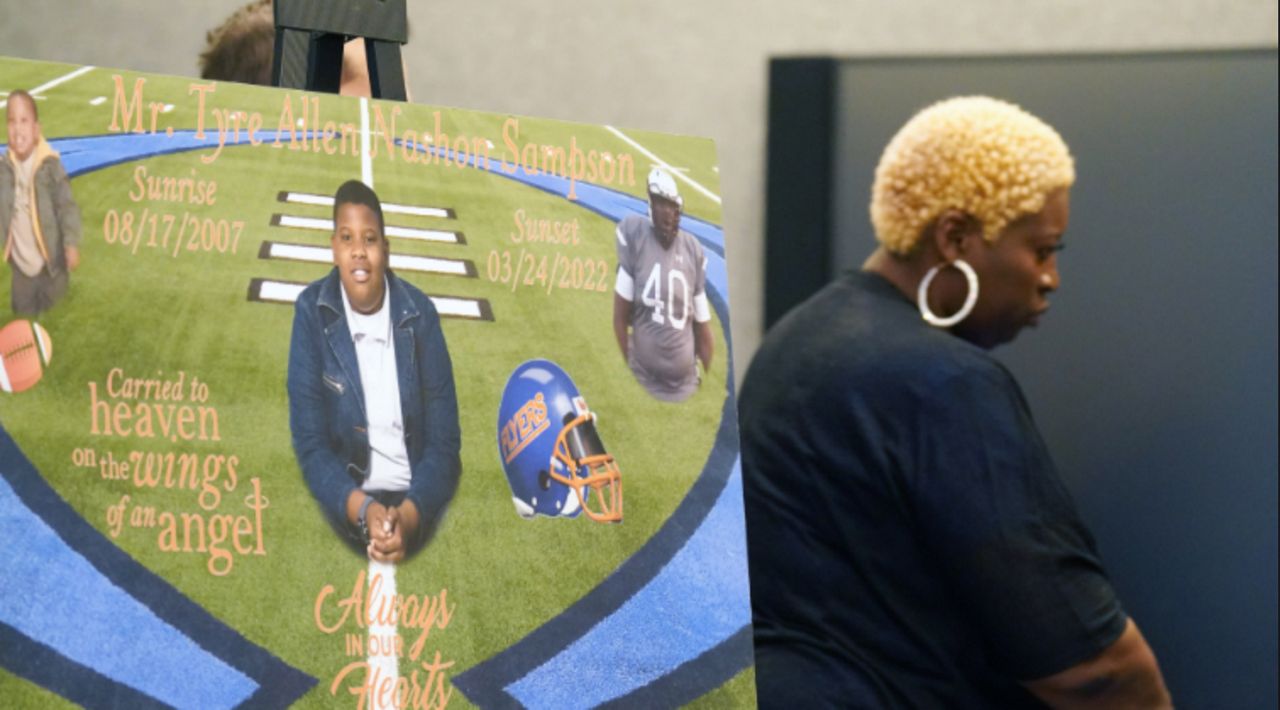ST. LOUIS — Twenty-two dollars is the cost of one seat belt that could have saved Tyre Sampson’s life last month when he fell to his death from a ride in Florida.
This was explained during a press conference Tuesday morning in St. Louis by Michael Haggard, the lawyer representing Sampson’s mother, Nekia Dodd, who spoke publicly for the first time since her son’s death.
The 14-year-old died March 24 after falling from the 430-foot Orlando FreeFall ride at ICON Park.
“This tragedy could have been avoided with one thing, avoided, simply with a $22 seat belt if it was deployed as secondary restraint,” Haggard said.
At the press conference, Dodd was wearing a T-shirt with a picture of Sampson, who was known as “Big Tick” among his football friends.
She said it was devastating to learn about her son over the phone and not be able to comfort him.
“It was gut wrenching,” Dodd said.
Her last interaction with Sampson was before he left for the trip. Dodd gave him a hug, and Sampson told her he would see her Saturday or Sunday.
Dodd wants the FreeFall ride to be taken completely down and for there to be stricter laws, weight restrictions, more workers, and better safety protocols for rides in general.
She has not visited the FreeFall site and said she does not have plans to do so.
Dodd wants her son to be remembered as a loving, young man.
“He was a gentle giant,” she said.
The community has been supportive of Dodd and the people who have checked in on her have meant a lot.

Two $2,500 scholarships for college freshmen are now in Sampson’s name through the Frank Clark Family Foundation.
On Monday, lawyers filed a 60-plus page lawsuit in Orange County alleging negligence against ICON Park, the Slingshot Group and its companies, the manufacturers, and the contractors.
Slingshot, the operator of FreeFall, had modified the seats on the ride to accommodate bigger guests, according to Haggard. The harness device was adjusted from 3-4 inches to 6-7 inches, and while Sampson was on the ride, the harness had opened 10-11 inches, leaving enough room for him to fall out of the ride. There were no additional seat belts.
Operators were told that there was no need for additional seat belts, Haggard said. The ride’s manual states that anyone weighing more than 287 pounds could not be on the ride. Haggard said there were no signs indicating that rule and there were no scales to weigh guests.
Among the allegations, the lawsuit goes so far as to say The Slingshot Group and companies knew the ride was not safe and did not have proper signage posted warning people about the potential dangers or signs about weight and height requirements.
The defense has cast a pretty wide net of possibilities that could factor into what led up to Sampson’s death. At least 10 different companies are named in the lawsuit.
Last week, Department of Agriculture and Consumer Services Commissioner Nikki Fried announced primary findings in the investigation into Sampson’s death.
That preliminary report detailing the circumstances surrounding the death of Sampson found the teen slipped from his seat on the Orlando FreeFall because someone manually adjusted a safety sensor.
Prior to FreeFall, Haggard mentioned that Sampson was turned away from other rides due to the weight limit. The civil lawsuit may result in a jury trial, according to Haggard.



